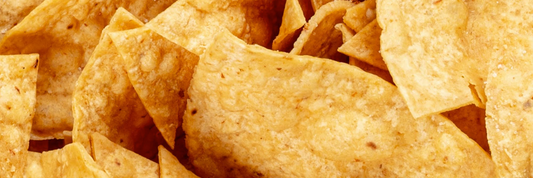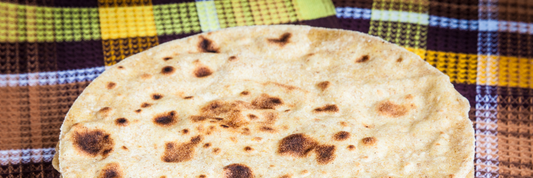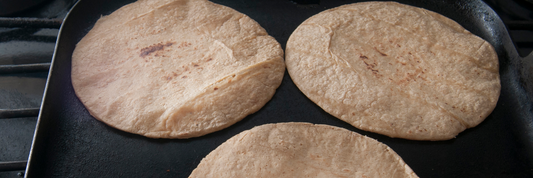When it comes to choosing the perfect tortilla for your meal, the debate of corn tortilla vs flour tortilla is as flavorful as the fillings they hold. Both have deep cultural roots, unique textures, and distinct nutritional profiles. Corn tortillas are a centuries-old staple of Mexican cuisine, crafted from nixtamalized corn for an earthy sweetness and a tender-yet-firm bite. Flour tortillas, with their soft, pliable texture and mild wheat flavor, have become a favorite in Tex-Mex and fusion dishes. Understanding their differences in taste, texture, nutrition, and best uses will help you choose the right tortilla for tacos, burritos, and everything in between.
- How Long Do Tortillas Last and How to Tell If They’re Bad
- Bread vs Tortilla vs Pita Wrap: Which One Is Healthier?
What is a Corn Tortilla?
A corn tortilla is a thin, round flatbread made primarily from masa harina — a special corn flour produced through nixtamalization. In this traditional process, dried field corn (maize) is soaked and cooked in an alkaline solution, usually limewater, which loosens the hulls, improves nutrient availability, and imparts a distinct aroma and flavor. The softened kernels are ground into masa, then shaped and cooked on a hot griddle or comal. Corn tortillas are typically 4–6 inches in diameter, with a slightly rustic appearance and a pliable yet sturdy texture when fresh. They are naturally gluten-free and have been a staple in Mexican cuisine for centuries, serving as the base for tacos, tostadas, enchiladas, and many other dishes.

What is a Flour Tortilla?
A flour tortilla is a soft, pliable flatbread made from wheat flour, water, fat (such as lard, shortening, or vegetable oil), and salt. Some recipes also include a leavening agent like baking powder for added puff and tenderness. The dough is rolled thin and cooked on a hot griddle until lightly browned. Flour tortillas originated in northern Mexico, where wheat was more readily available than corn, and they are typically larger than corn tortillas, ranging from 6 inches for small wraps to over 12 inches for burrito-size. Their flexible texture and neutral wheat flavor make them ideal for wrapping substantial fillings without breaking.

Taste, Texture and Structural Differences — Corn Tortilla vs Flour Tortilla
Flavor notes: earthy/sweet corn vs neutral/wheaty
Corn tortillas offer a distinctive, earthy sweetness and a robust corn aroma, especially when freshly pressed from masa. The flavor can vary subtly depending on the corn variety, with yellow corn tasting slightly sweeter, white corn more delicate, and blue corn nuttier. Flour tortillas, by contrast, have a mild, slightly nutty wheat flavor. The addition of fat can add richness, while baking powder can give a faintly toasty note.
Mouthfeel and chew: crumbly/firm vs soft/stretchy
Corn tortillas tend to be firmer and can feel slightly coarse on the palate, breaking apart more easily if bent when cold. When fresh and warm, they are pliable yet maintain some resistance to the bite. Flour tortillas have a soft, elastic chew and are generally more tender due to the gluten network in wheat and the added fat, which keeps them supple.
Structural strength: which holds fillings; when tortillas break
Corn tortillas hold light to moderate fillings well but may crack under heavy or wet fillings, especially if not warmed. This is why tacos made with corn tortillas are often “double-shelled” for added strength. Flour tortillas excel in structural integrity, holding large, heavy fillings without tearing, making them the go-to for burritos, wraps, and quesadillas.
Sizing: street taco size vs burrito size and why it matters
Corn tortillas are typically 4–6 inches across, perfect for handheld street tacos or layered dishes like enchiladas. Flour tortillas are available in multiple sizes, with larger formats (10–12 inches) allowing for tightly wrapped burritos and quesadillas without leakage. Size directly impacts the type of dishes each tortilla is best suited for.
Nutrition Comparison — Corn Tortilla vs Flour Tortilla
Macronutrients: calories, carbs, fiber, protein, fat
On average, a 28-gram (1-ounce) corn tortilla contains about 60–65 calories, 12–13 grams of carbohydrates, 1–1.5 grams of protein, 0.5–1 gram of fat, and around 1.5–2 grams of fiber. A similar-sized flour tortilla has roughly 85–100 calories, 15–18 grams of carbohydrates, 2–3 grams of protein, 2–3 grams of fat, and about 1 gram of fiber. The higher fat content in flour tortillas comes from added oil or lard, and the higher calories come from both fat and refined wheat.
Micronutrients: calcium, B vitamins, iron and folate
Corn tortillas provide magnesium and small amounts of potassium and phosphorus. Nixtamalization also makes niacin (vitamin B3) more bioavailable. Flour tortillas, especially in the US and Canada, are often enriched with iron, folic acid, and B vitamins like thiamine and riboflavin. Some also contain added calcium.
Typical calories saved choosing corn over flour
For a single 6-inch tortilla, choosing corn over flour typically saves 20–40 calories. In a meal with three tortillas, that’s a difference of roughly 60–120 calories, depending on brand and recipe. This can be significant for calorie-conscious diets.
Which is better for weight loss, blood sugar control, fiber intake
Corn tortillas generally have fewer calories, more fiber, and a lower glycemic index than flour tortillas, making them a better choice for weight management and blood sugar control. The higher fiber helps with satiety, while the absence of refined wheat can benefit those monitoring carbohydrate quality. However, whole wheat flour tortillas can offer comparable fiber if chosen over refined versions.

Culinary Uses and Best Dishes — Corn Tortilla vs Flour Tortilla
Best uses for corn tortillas: tacos, enchiladas, tostadas, taquitos, chilaquiles, tortilla chips
Corn tortillas shine in traditional Mexican dishes. Their sturdy yet pliable structure works well for street tacos, while their flavor stands up to rich fillings in enchiladas. Fried or baked, they become crispy tostadas or taquitos. Cut into wedges and fried, they make tortilla chips. When lightly fried and simmered in sauce, they form the base for chilaquiles.
Best uses for flour tortillas: burritos, quesadillas, fajitas, wraps, calzones
Flour tortillas are the preferred choice for dishes requiring larger wraps and flexibility. Burritos rely on their size and strength to contain substantial fillings. Quesadillas benefit from their pliability, allowing for easy folding without cracking. For fajitas, flour tortillas are favored in Tex-Mex cuisine. Their neutral flavor also makes them adaptable for fusion dishes like tortilla-based calzones or sandwich wraps.
When you can swap corn for flour and when you should not
Corn tortillas can replace flour in smaller dishes like tacos or quesadillas if a gluten-free option is needed, but the texture and flavor will be different. For burritos or wraps with heavy, moist fillings, corn tortillas often tear and are not recommended unless doubled or reinforced. Conversely, flour tortillas can be used for tacos but may overpower delicate fillings with their size and texture.
Chef tips: warming, pressing, double-shelling, frying
To maximize flexibility and flavor, warm tortillas before use — either on a dry skillet, directly over a low gas flame, or wrapped in a damp cloth in the microwave. Corn tortillas benefit from brief heating to prevent cracking. For sturdier tacos, use two small corn tortillas stacked (double-shelling). Light frying can add flavor and structure for tostadas, taquitos, or chips. For homemade tortillas, pressing dough evenly and cooking on a preheated comal ensures consistent results.
Conclusion
The choice between corn tortilla vs flour tortilla ultimately depends on your priorities — whether it’s authentic flavor, texture, dietary needs, or recipe requirements. Corn tortillas bring bold corn flavor, lower calories, and more fiber, making them a healthier choice for many. Flour tortillas offer unmatched flexibility and strength, ideal for wrapping hearty fillings. By knowing their differences, you can pair the right tortilla with the right dish and elevate your cooking with both tradition and taste in mind.







